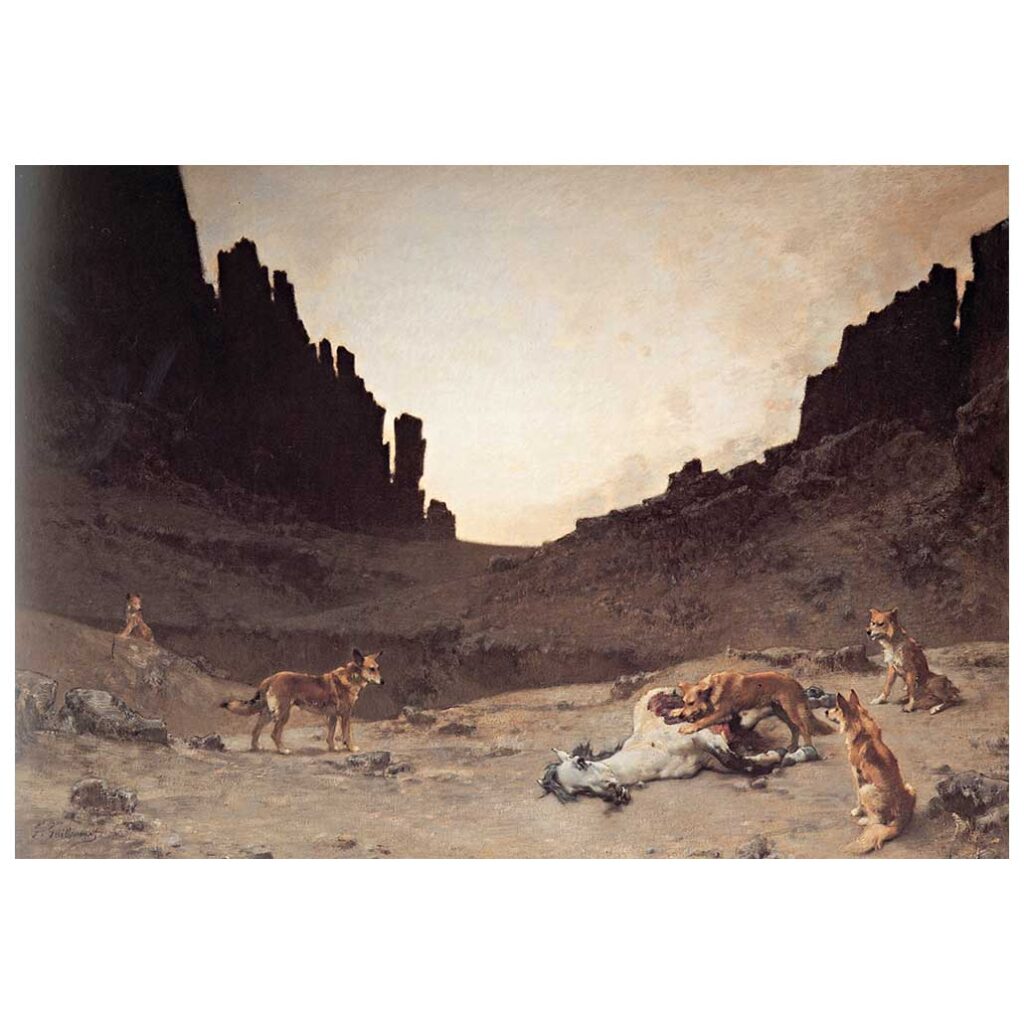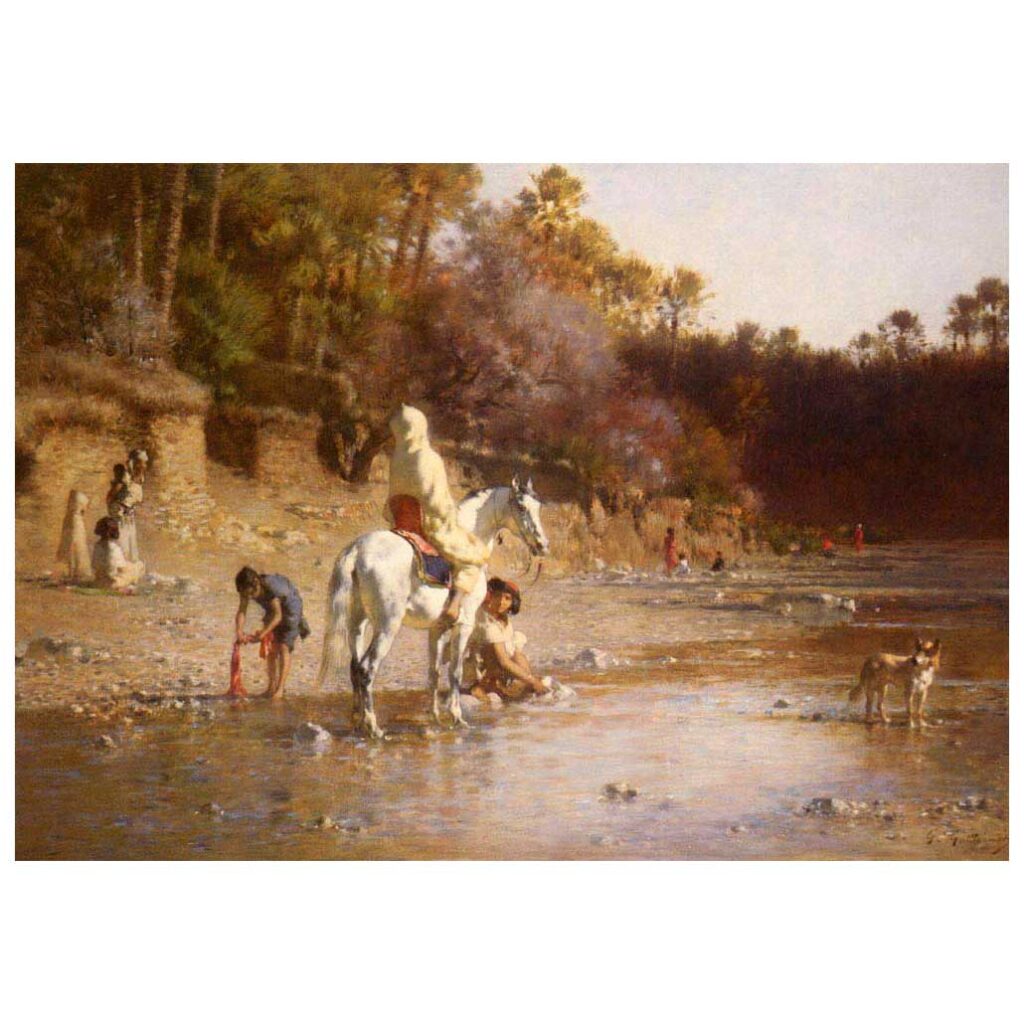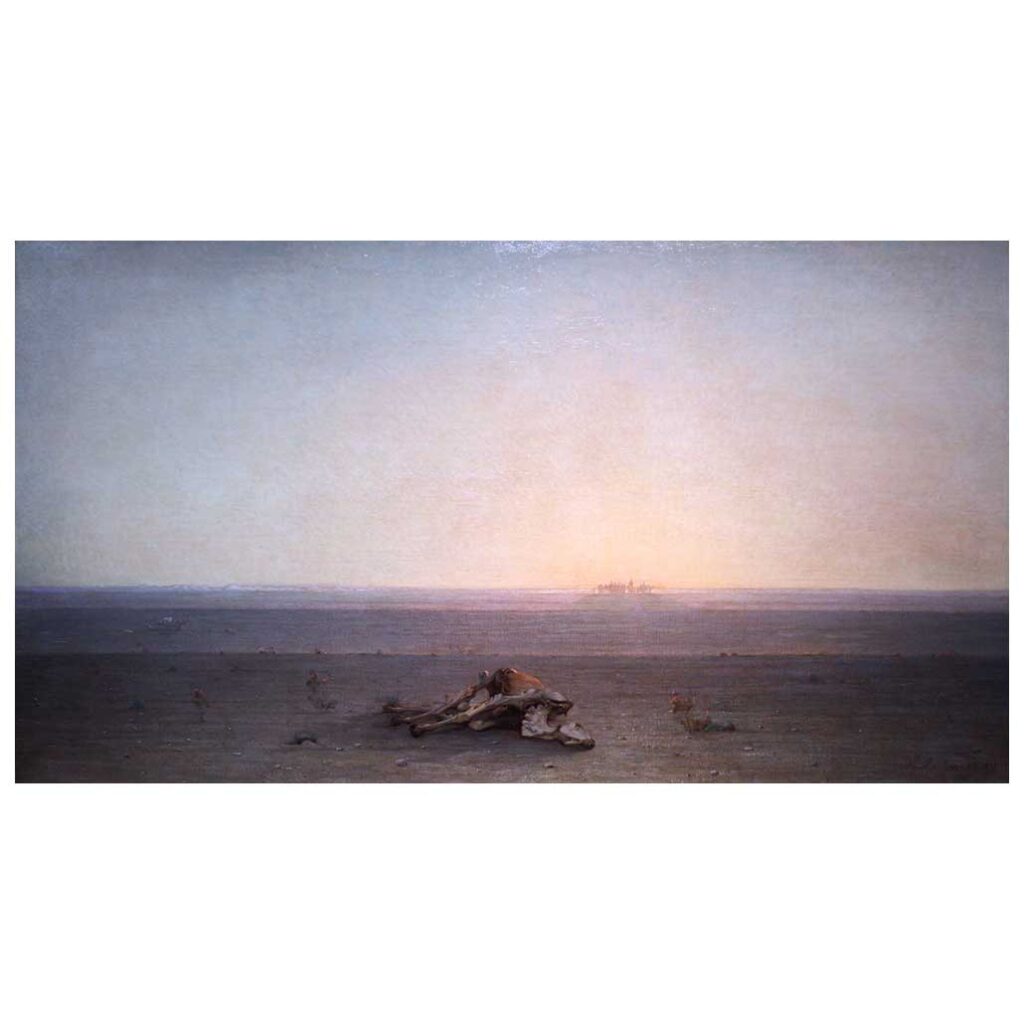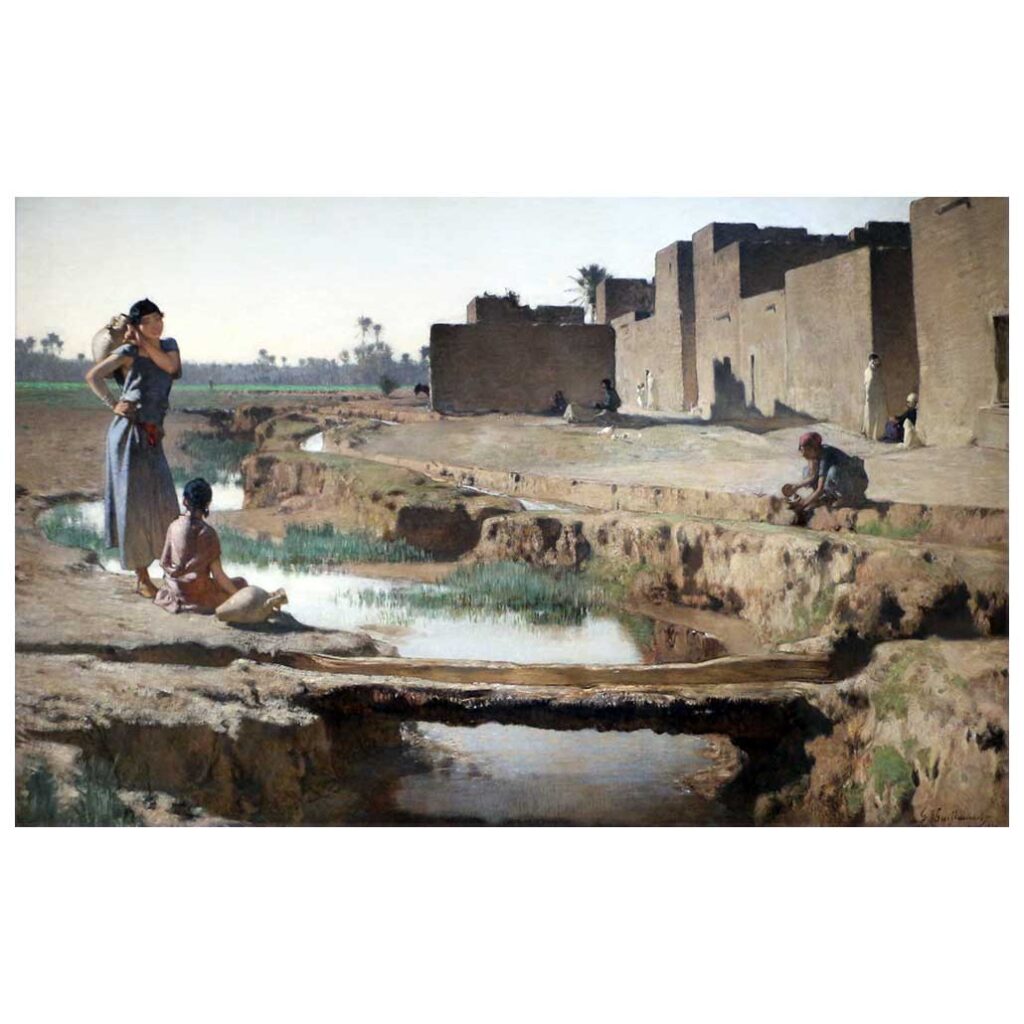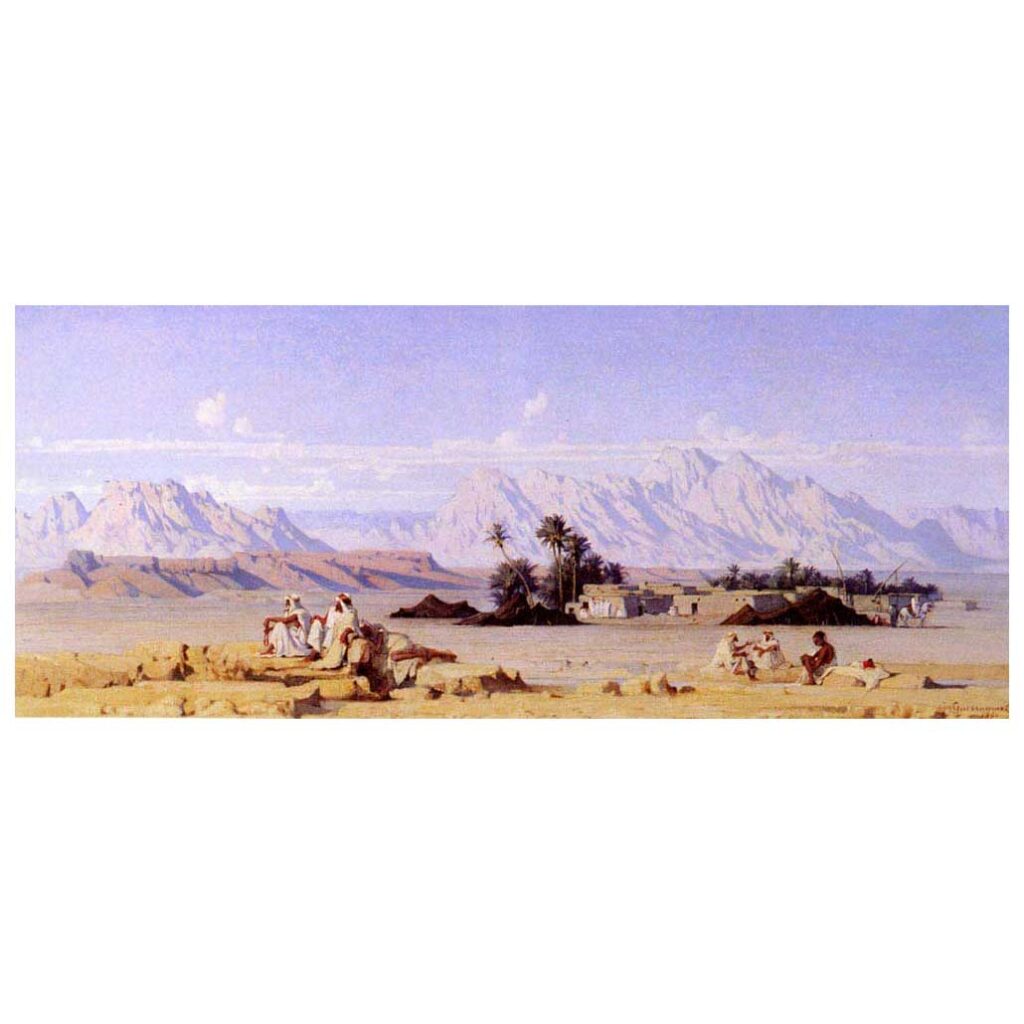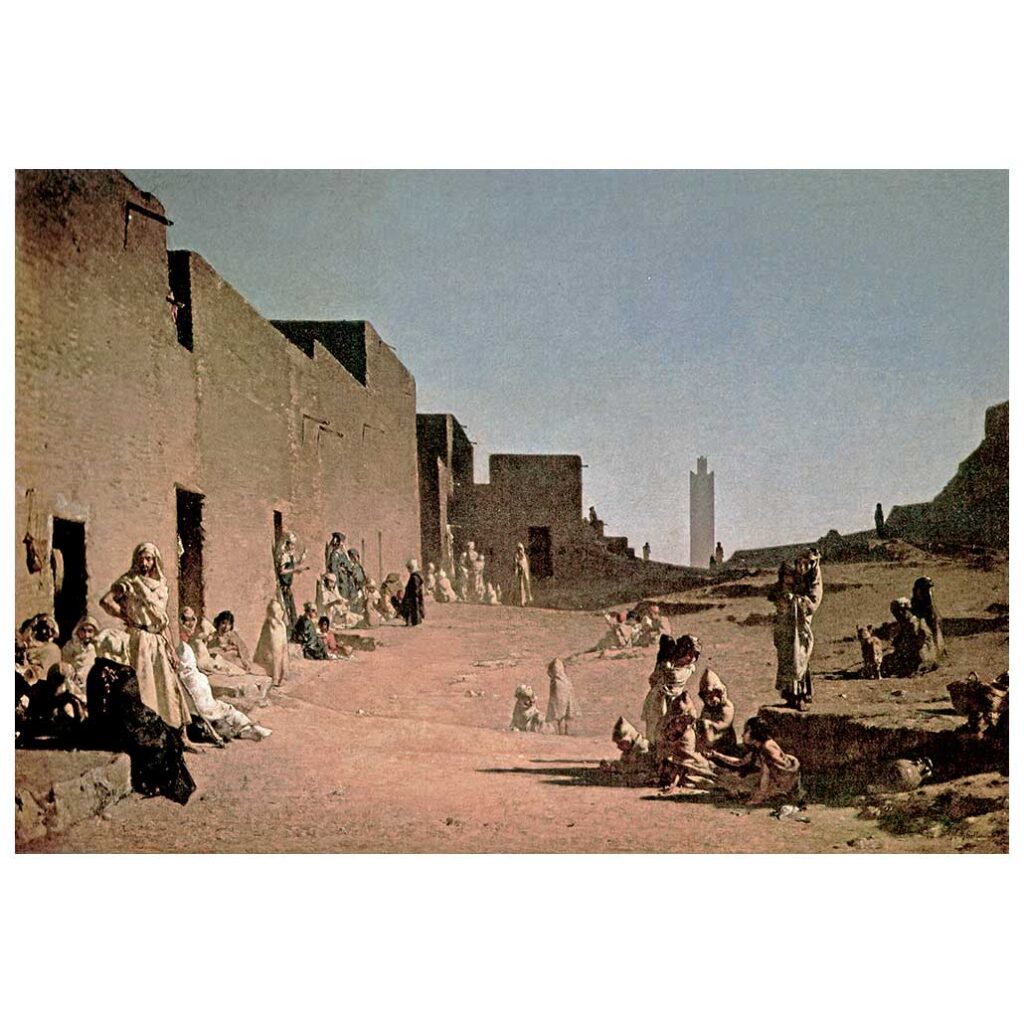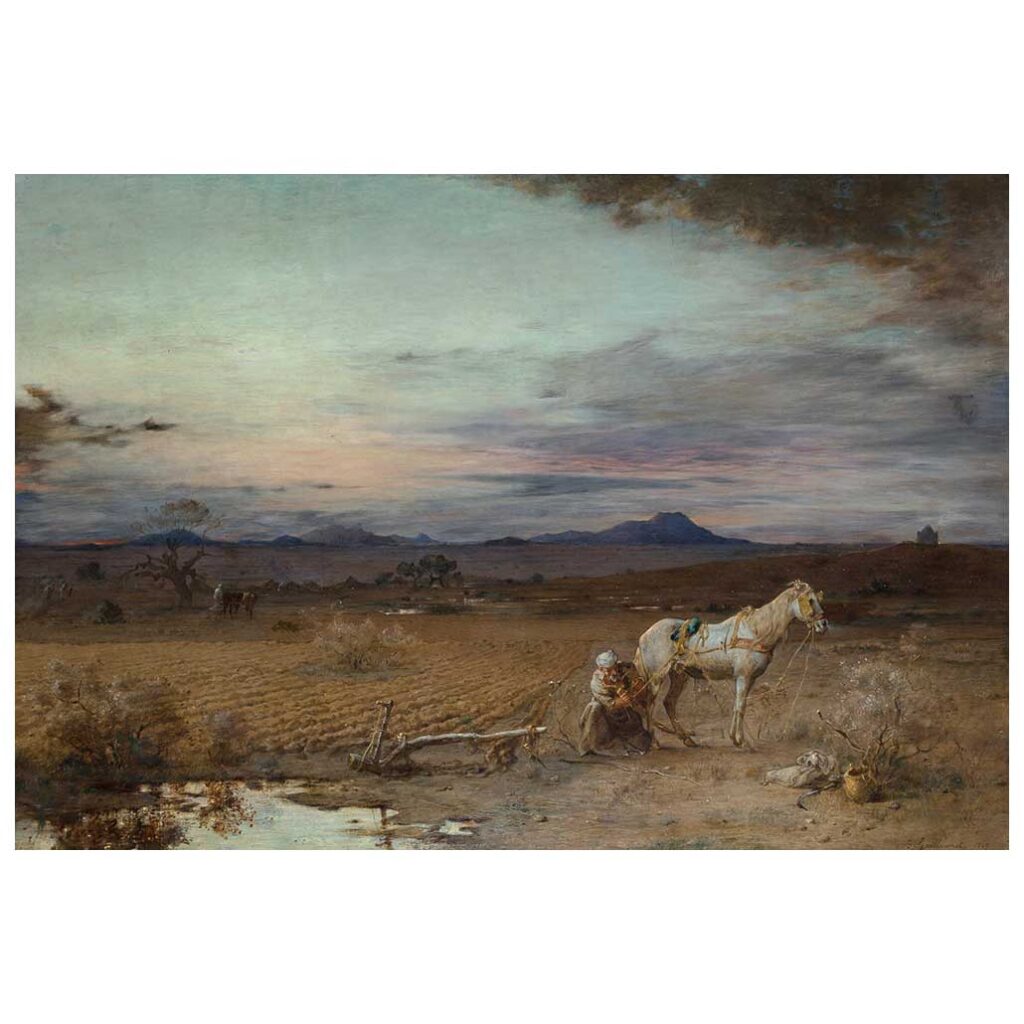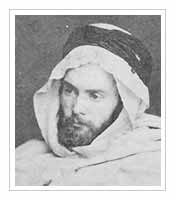
Gustave Achille Guillaumet (1840 – 1887)
Orientalist painter Gustave Achille Guillaumet was born in 1840 in Puteaux. He was initially a student of François-Edouard Picot and Félix-Joseph Barrias. In 1857 he joined the École nationale supérieure des Beaux-Arts in Paris where he became a student of Alexandre Abel de Pujol.
Gustave Guillaumet belonged to the generation of naturalist painters devoted to the problems of light and atmosphere. But more important, he was the turning point in nineteenth-century Orientalism. His descriptions, in writing and painting, of the primitive and austere life in the Algerian desert came at a moment when there was a great interest in France in the Algerian population, now that there were stronger politico-economic links between the two countries. Algeria was a French department like France’s provinces, no longer a strange and exotic land.
Guillaumet had just won the second place in the Prix de Rome as a pupil at the Paris School of Fine Arts, when a chance invitation took him to Algeria in 1862. The visit started badly, for he caught malaria, from which he never entirely recovered, and had to spend three months in the military hospital in Biskra. But he was so captivated by the country that he returned nine more times.
Gustave Achille Guillaumet 1860s
During the 1860s, Guillaumet’s Salon paintings tended to be melodramatic, such as Evening Prayer in the Sahara (Musée d’Orsay, Paris, on loan to the Palais de Justice, Lyons), Razzia in Jebel Nador, Farming on the Moroccan Frontier and the lugubrious Famine. His painting in the 1872 Salon, Douar Women at the Moroccan Frontier, which he repeated in oils, pastels and drawings, marked a new phase in his work. From then on, he showed the bleak, unchanging and impoverished existence of the desert people whose life he shared, whether under the black woollen tents or in the rough yellow clay houses of the little Saharan towns.
He travelled from Mascara and Oran to Kabylia, but preferred to escape the contaminations of European civilisation, going south to Bou Saada, Biskra, El Kantara and Laghouat, one of the most advanced posts in the south. He made countless drawings and pastels of women drawing water from the wadis, horsemen, camels, sheep and wild dogs (he brought three back to his country house in France). For these open-air subjects, he developed a technique of tight, separate little touches of dry paint which defined mass and silhouettes. In the 1888 studio sale, four hundred and forty-nine oils, pastels and studies were sold; in 1897, one hundred and seventeen.
the end of his short career
Towards the end of his short career, he painted women spinning or weaving in the interiors of their Saharan dwellings. The deep transparent shadows of the corners are strangely lit by rebounding sunbeams, the glowing red of the womens’ clothing in contrast to the sombre brown and ochre of the clay walls.
Like Fromentin, Guillaumet was a literary man as well as a painter. His Tableaux Algériens (1888), a collection of articles that had been published in the Nouvelle Revue between 1879 and 1884, is an interesting record of the attitude of an European artist towards Algerian life.
Literature
A. Renan, “Gustave Guillaumet”, Gazette des Beaux-Arts, Paris, 1887; L. Bénédite, “La peinture orientaliste et Gustave Guillaumet” Nouvelle Revue, Paris, 1888; A. Badin, “Gustave Guillaumet”, L’Art, Paris, 1888.
Exhibitions: Gustave Guillaumet, École Nationale des Beaux-Arts, Paris, 1888; Gustave Guillaumet, Société des Peintres Orientalistes Frangais, Galerie Durand-Ruel, Paris, 1899.
